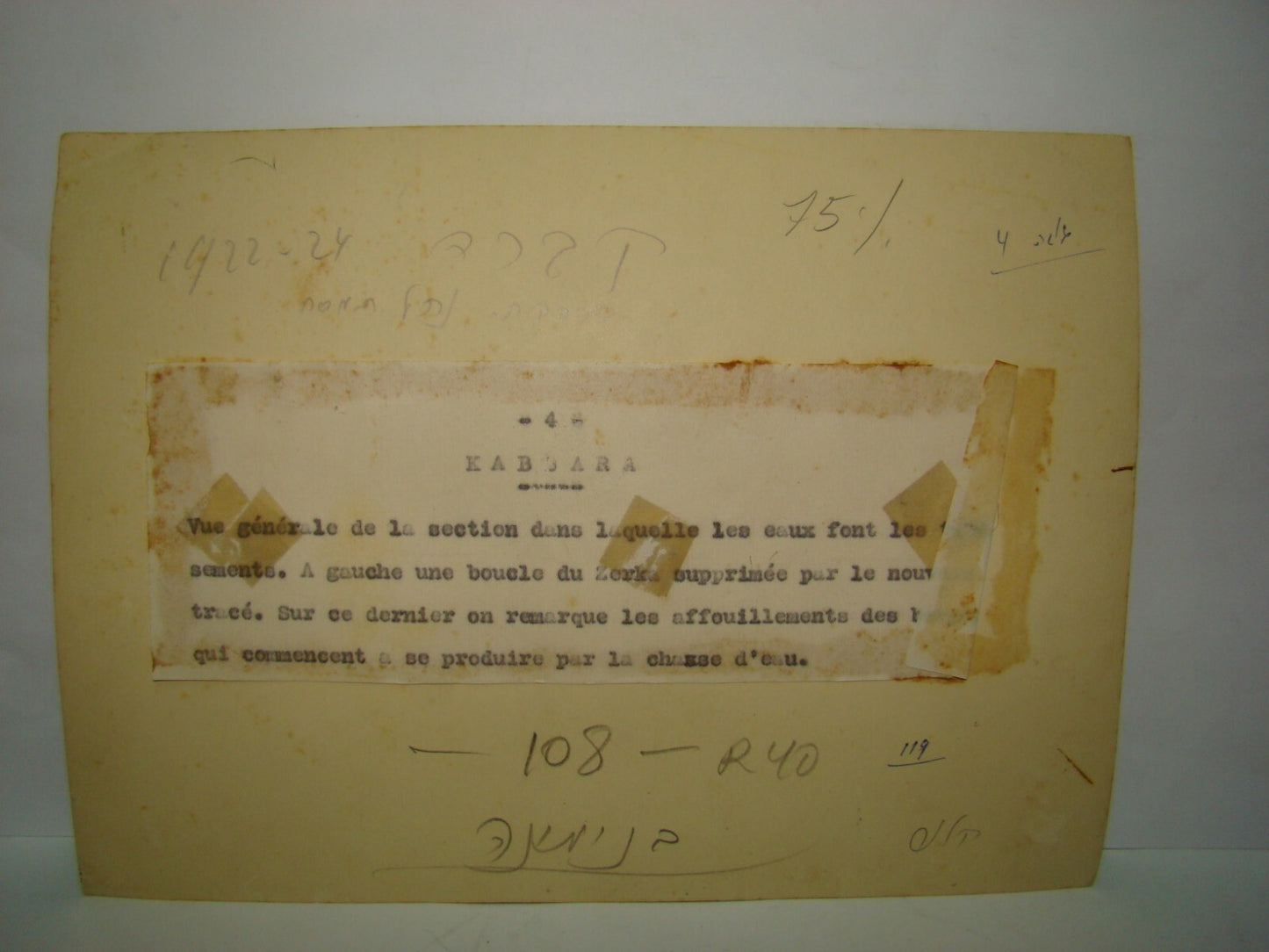1
/
of
3
IsraelPalestineHistory
Photo Palestine Jewish Israel 1924 Binyamina Zichron Moshava Pioneers Zionist
Photo Palestine Jewish Israel 1924 Binyamina Zichron Moshava Pioneers Zionist
Regular price
$411.13 USD
Regular price
Sale price
$411.13 USD
Quantity
Couldn't load pickup availability
Jewish Palestine Israel 1924 Binyamina Zichron Moshava Pioneers Zionist Photo
ביצות כבארה השתרעו עד שנות ה-20 של המאה ה-20 במרזבה של מישור חוף הכרמל סביב נחל תנינים ממזרח לקיבוץ מעגן מיכאל של היום. הביצות הוכרזו כאדמת ג'יפתליק על ידי השלטון העות'מאני.
אדמת הביצה נרכשה על ידי חברת פיק"א של הברון רוטשילד בשנת 1922, והאגודה השקיעה כרבע מיליון ליש"ט בניקוזה. ייבוש רוב שטח הביצה התנהל במשך שנות העשרים והשלושים של המאה ה-20. לצורך פעולות הניקוז נשכרו פועלים מצריים וסודאנים, אשר עבדו במקום בתנאי מחיה קשים וסבלו ממלריה וגויסו פועלים משבט ערב אל-ע'וארנה. פיק"א רכשה אדמה חלופית לבדויים וב-1926 הקימה עבורם את הכפר ג'סר א-זרקא על רכס הכורכר הסמוך.
אנשי העלייה השלישית דרשו מפיק"א לשלב יהודים בעבודה במסגרת כיבוש העבודה, אולם נתקלו בסירוב. לאחר מאבק ציבורי שהתנהל בשנת 1924 הסכימה פיק"א לשלב גם פועלים יהודים בעבודה, ותנאי העבודה שופרו. העבודות הביאו פועלים רבים לזכרון יעקב ולמושבה החדשה בנימינה, ובהם אנשי קבוצת כבארה וקבוצת מנורה של תנועת בית"ר בהנהגתו של גרשון שץ.
אחד מן החלוצים שייבשו את הביצה היה משה שטקליס. בסייוריו באזור בשנת 1929 הוא גילה את מערת כבארה הפרהיסטורית, בה נערכו מאוחר יותר חפירות רבות.
The Kabara swamps extended until the 1920s in the gutter of the Carmel coast plain around Nahal Taninim, east of today's Kibbutz Ma'agan Michael. The swamps were declared as Jiftlik land by Ottoman rule.
The swamp was purchased by Baron Rothschild's PICA in 1922 and the association invested about a quarter of a million pounds in Nicosia. Drying Most of the swamp area was conducted during the 1920s and 1930s. Egyptian and Sudanese workers were hired for the drainage operations, who worked in harsh conditions and suffered malaria and recruited laborers from the Arab al-Ghawarana tribe. PICA purchased alternative land for Bedouin and in 1926 established the village of Jisr al-Zarqa on the nearby kurkar ridge.
The Third Aliyah demanded that the PICA integrate Jews into the labor market, but were refused, and after a public struggle in 1924, PICA agreed to integrate Jewish workers into the labor market. The works brought many workers to Zikhron Ya'akov and to the new settlement of Binyamina, among them members of the Kabara group and the Menorah group of the Betar movement, led by Gershon Schatz.
One of the pioneers who dried the egg was Moshe Shtaklis. In his tour of the region in 1929, he discovered the prehistoric cave of Kabara, where many excavations were conducted later.
16x22 cm
for condition see pictures
Share







